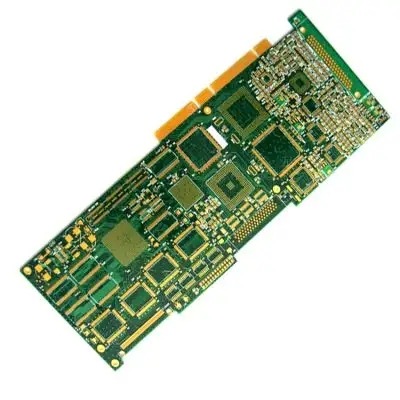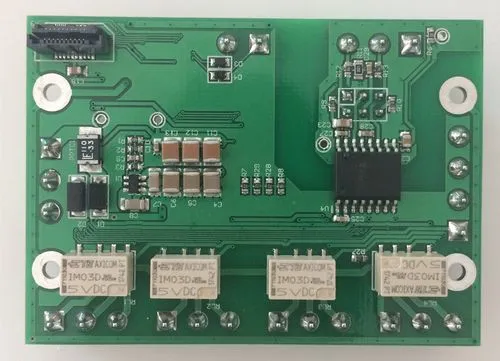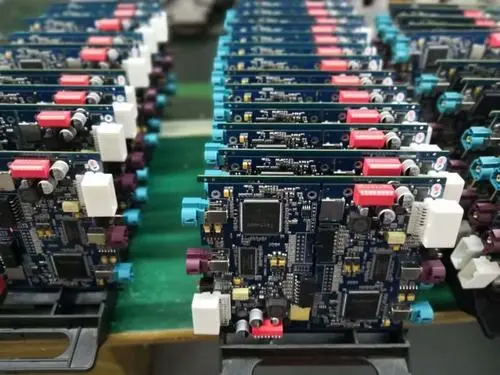
Introduction to the design of high current sharing circuit board
Systems operating at high current or high voltage are faced with a series of unique challenges that cannot be seen in smaller digital systems. The operator may be exposed to unsafe environments and the design may fail due to heat or electrostatic discharge. However, correct PCB design decisions can help reduce the risks involved in interaction with power electronic devices. In this guide, we will introduce some basic design points to be considered in the design of high current circuit boards. In some cases, the layout and safety considerations involved in high current circuit board design are similar to those involved in high voltage design, especially when we consider safety.
Basic knowledge of high current circuit board layout
There are some good examples of high current PCB designs that do not necessarily operate at high voltages. In addition, the concepts of "high voltage" and "high current" are somewhat arbitrary. A better indicator to distinguish between these types of designs might be security. If there is a risk of electric shock or overheating in the DC current, you may need to apply some of these design principles to ensure safety and reliability.

Component Selection
High current designs and power systems typically derive most of their reliability from components. Although it sounds obvious, make sure to consider the safety margin of the component during the selection. Generally speaking, it is recommended to look at two specifications:
Rated current, especially MOSFET and inductive elements
Thermal resistance value (if any)
You can use the estimated or designed operating current to determine power consumption, or use the first specification above to obtain a worse case value. Both contribute to thermal management, which requires the use of thermal resistance values to estimate temperature. For some components, you can determine whether a radiator is required to ensure reliability.
Other components that are important to high current circuit boards, such as connectors, may have very high ratings and are useful in power systems.
Select the right copper weight
The resistance of copper used in wiring will produce some DC power loss, which will be lost in the form of heat. This becomes very important for very high current designs, especially when the component density is high. The method to prevent DC loss in high current PCB is to use copper with larger cross-sectional area. This means that either heavier copper is required, or wider cabling is required to maintain sufficiently low joule heat and power losses. Use PCB wiring width and ammeter to determine the copper weight and/or wiring width required to prevent excessive temperature rise.
Grow larger: Use planes instead of tracks
If you have to input very high current into the power system and the wiring is too wide to meet your needs, use the power layer instead of wiring. For example, in the Eurocard format backplane we made in the past, we used multiple power layers to supply 100 A of current from two dedicated low-voltage (24 V) power supplies. When you need to support extreme currents, you can use the same strategy in other systems.
Copper clad cooling hole
In a circuit board enclosure with stagnant air, if you rely only on conduction or natural convection, it is difficult to transfer heat from the device. The thermal through-hole can be placed on the circuit board with copper surface layer to provide additional heat transfer by providing a direct connection to the plane layer (GND), so as to keep away from some components. This can be used for circuits close to thermal elements or wiring to provide additional heat conduction away from the surface layer, but should not be used when isolation is required, such as between the primary and secondary turns of the power transformer.
Although cooling holes are useful for specific components, a better strategy is to consider how to use large heat sinks or direct conduction paths to the enclosure to provide high heat dissipation.
Pay attention to the ground
High current systems may require the use of the same type of safety fault measures. A certain degree of safety and EMI can be achieved through appropriate grounding strategies. In general, you should not split the grounding, but the exception is the power system involving high current and/or high voltage. Grounding shall be separated between input AC, non regulated DC and regulated DC parts.
A good starting point is the grounding strategy in the AC system or isolated power supply. Generally, for high current power supply systems, you will use a 3-wire DC layout (PWR, COM, GND), where the GND connection is actually a ground connection. Your circuit board may use isolation strategy, where the output side is disconnected from GND and the input side is grounded to ensure safety in case of failure.
Use thicker circuit boards
At first glance, this seems counterintuitive. You will think that thinner circuit boards can provide better conduction away from components, so why use thicker circuit boards. In fact, when non-standard plate thickness is used, the in-plane thermal resistance will be lower and the thermal quality of the plate will be higher. The thicker circuit board (2 or 3 mm) can also provide greater mechanical support for the larger components in the high current circuit board, especially the inductive components and large radiators installed on the board.
ESD and safety
This part of DC has its own series of problems, especially in the power system, especially in the design of operating under high voltage and high current at the same time. PCB design and PCB processing manufacturers introduce the layout and safety considerations involved in the design of high current circuit boards.






